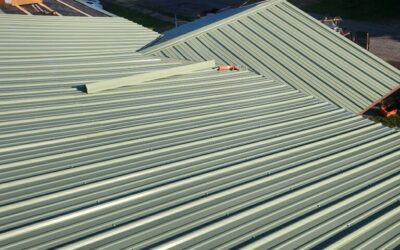Are Roof Leaks Hard to Fix? The Complete Homeowner’s Guide
Roof leaks can be frustrating, expensive, and confusing. But you’re probably wondering: Are roof leaks hard to fix? The short answer: it depends. Some leaks are easy to repair, while others require professional expertise. This guide walks you through everything—from minor fixes to major repairs—so you can assess the difficulty level, understand costs, and make confident decisions.
Table of Contents
- How to Diagnose a Roof Leak
- Simple DIY Leaks vs. Complex Repairs
- Factors That Make Leaks Harder to Fix
- Common Leak Locations & Difficulty Rankings
- Tools and Materials for DIY Repairs
- When to Call a Professional Roofer
- Cost and Time Comparison
- Seasonality: When Leaks Are Harder to Fix
- Preventing Future Leaks
- Local Challenges in Ashtabula, OH
- Checklist & Repair Planning
- FAQs
- Final Thoughts & Next Steps
1. How to Diagnose a Roof Leak
Before repair, you need to find the leak’s origin—it’s not always where water shows inside. Here’s how:
- Attic inspection during rain or use a garden hose
- Look for water stains, drips, mold, or damp insulation
- Follow water trails—water travels before dripping
- Examine vents, chimneys, flashing, valleys, and shingles
- Check shingles for cracks, uplift, curling, or missing granules
Accurate diagnosis makes repair easier and cheaper.
2. Simple DIY Leaks vs. Complex Repairs
Leaky roofs fall into two main categories:
A. Easy DIY Fixes
- Replacing a single cracked or missing shingle
- Resealing around a pipe vent with caulk
- Clearing a clogged rain gutter that caused overflow
- Temporary tarp installations for emergencies
These are often quick, low-cost fixes using basic tools.
B. Complex Repairs Requiring Pros
- Rusted or damaged flashing around chimneys and skylights
- Underlying deck or structural damage requiring replacement
- Multiple leak sources in valleys or crickets
- Low-pitch roofing with membrane needs or extensive flashing
- Ice-dam–induced leaks requiring insulation and underlayment upgrades
These require professional experience, tools, safety gear, and roofing knowledge.
3. Factors That Make Leaks Harder to Fix
Several variables determine how difficult a leak is to address:
Roof Pitch & Access
- Steep/sloped roofs are dangerous to work on
- Flat roofs can be walked on, but may have membrane complexities
Roofing Material
- Asphalt shingles are easier to repair
- Tile, slate, and metal require specialized tools and know-how
Flashing Integrity
- Replacing complex flashing (chimneys, vents) is intricate
- Bad flashing can invalidate warranties if handled incorrectly
Decking & Underlayment Condition
- Soft, rotten wood means tear-off and replacement
- A complete underlayment replacement often needed if damaged
Weather & Seasonal Constraints
- Winter roofing takes special adhesives and raises slip hazards
- Summer heat can injure installers or affect materials
Local Building Code & Permits
- Some repair types require permits and inspections—adds complexity
4. Common Leak Locations & Difficulty Rankings
| Leak Location | Difficulty | Why |
|---|---|---|
| Single damaged shingle | Easy | Can be replaced with minimal risk |
| Pipe vent flashing | Moderate | Requires sealing; attic access needed |
| Chimney flashing | Hard | Multi-layer repair, reliable waterproofing needed |
| Roof valley | Hard | High water flow; membrane or flashing likely required |
| Skylight flashing | Hard | Near glass; seal and curb must be exact |
| Metal roof seam | Moderate | Needs sealing; corrosion may complicate |
| Flat roof membrane tear | Moderate | Membrane patching; expertise is helpful |
| Rotten decking | Hard | Must remove roofing layers, replace wood, re-roof entirely |
5. Tools & Materials for DIY Repairs
Basic Tools
- Roofing hammer or whammy bar
- Utility knife with roofing blade
- Caulking gun with elastomeric sealant
- Replacement shingles or membrane patch kit
- Ladder and roof-safe footwear
Common Materials
- Roofing nails (galvanized)
- Flashing cement or roof caulk
- Replacement shingles
- Flashing pieces (aluminum or galvanized steel)
- Underlayment patch or peel-and-stick for valleys
- Emergency tarp
Safety Equipment
- Fall protection harness and secure anchor point
- Sturdy ladder with stabilizer
- Non-slip boots and work gloves
6. When to Call a Professional Roofer
It’s time to go pro when:
- Leaks involve flashing, valleys, skylights, or chimneys
- Multiple leaks exist or leaks recur after DIY
- You spot structural or decking rot
- You need permit-compliant repairs or re-roofing
- Steep roof pitch or hazardous access complicates DIY
- Warranty compliance matters (DIY can void warranty)
7. Cost and Time Comparison
| Repair Type | DIY Cost | Pro Cost | DIY Time | Pro Time |
|---|---|---|---|---|
| Shingle replacement | $30–100 | $150–400 | 1–2 hours | 1–4 hours |
| Pipe vent sealing | $20–60 | $200–500 | 1 hour | 1–3 hours |
| Chimney flashing replacement | Not DIY | $400–1,200 | N/A | 4–8 hours |
| Valley membrane flashing | Not DIY | $800–2,000 | N/A | 8–16 hours |
| Deck replacement | Not DIY | $2,000–8,000+ | N/A | 1–3 days |
| Flat roof membrane patching | $50–200 | $400–1,000 | 1–3 hours | 2–6 hours |
8. Seasonality: When Leaks Are Harder to Fix
Winter
- Cold inhibits sealant bonding
- Ice and snow create safety hazards
- Far fewer daylight hours
Summer
- Heat may soften shingles or burn installers
- Storms can disrupt outdoor repairs
Best times: Spring and fall, when temperatures range between 50–80°F for ideal sealant performance and weather predictability.
9. Preventing Future Leaks
- Inspect roof biannually, especially after severe weather
- Clean gutters seasonally to prevent overflow
- Ensure attic insulation and ventilation to reduce condensation
- Regular maintenance of flashing and sealant joints
- Replace damaged shingles immediately—don’t wait
10. Local Challenges in Ashtabula, OH
In Ashtabula, homeowners face:
- Heavy lake-effect snow that triggers ice dams and moisture issues
- Freeze-thaw cycles accelerating flashing failure and shingle curling
- Frequent spring storms bringing wind damage
- Local contractors familiar with permits, snow load requirements, and waterproofing strategies
Choose professionals experienced with local conditions.
11. Repair Checklist & Planning Template
- Inspect — Locate and trace leaks
- Attempt DIY fix — Shingle, seal, gutter cleaning
- Monitor repairs — Watch for reoccurrence
- Escalate to pro — If leaks persist or involve complex elements
- Schedule inspection — Have a pro assess deck, underlayment, flashing
- Repair properly — Flashing, decking, membrane upgrades
- Confirm credentials — Ensure licensed, insured professionals use permits
- Document work — Photos, receipts, warranties
12. Frequently Asked Questions
Q: Can I fix a leak myself?
A: Simple repairs—shingle replacement, caulking—are doable. But complex issues require professionals.
Q: How long does a repair take?
A: Simple jobs may take 1–4 hours; complicated fixes require 1–3 days.
Q: How do I know it’s fixed?
A: Track during the next rainfall or use a garden hose. No drips = success.
Q: Do small leaks damage decking?
A: Yes—long-term exposure can rot wood and compromise roofing structure if left unfixed.
13. Final Thoughts
- DIY repairs—limited, quick, and cheap but don’t risk safety or skill limitations.
- Professional repairs—more costly but comprehensive and warranty-backed.
- Diagnose leaks carefully; don’t chase symptoms.
- Prevention saves time and money in the long run.
Take the Next Step
In Ashtabula, OH, S&K Construction & Remodeling offers thorough roof inspections, expert repairs, and long-term solutions tailored to local weather conditions. From emergency fixes to full re-roofs, trust our experienced team to keep your home safe and dry. Contact us today for a free assessment!
 (440) 307-2060
(440) 307-2060

